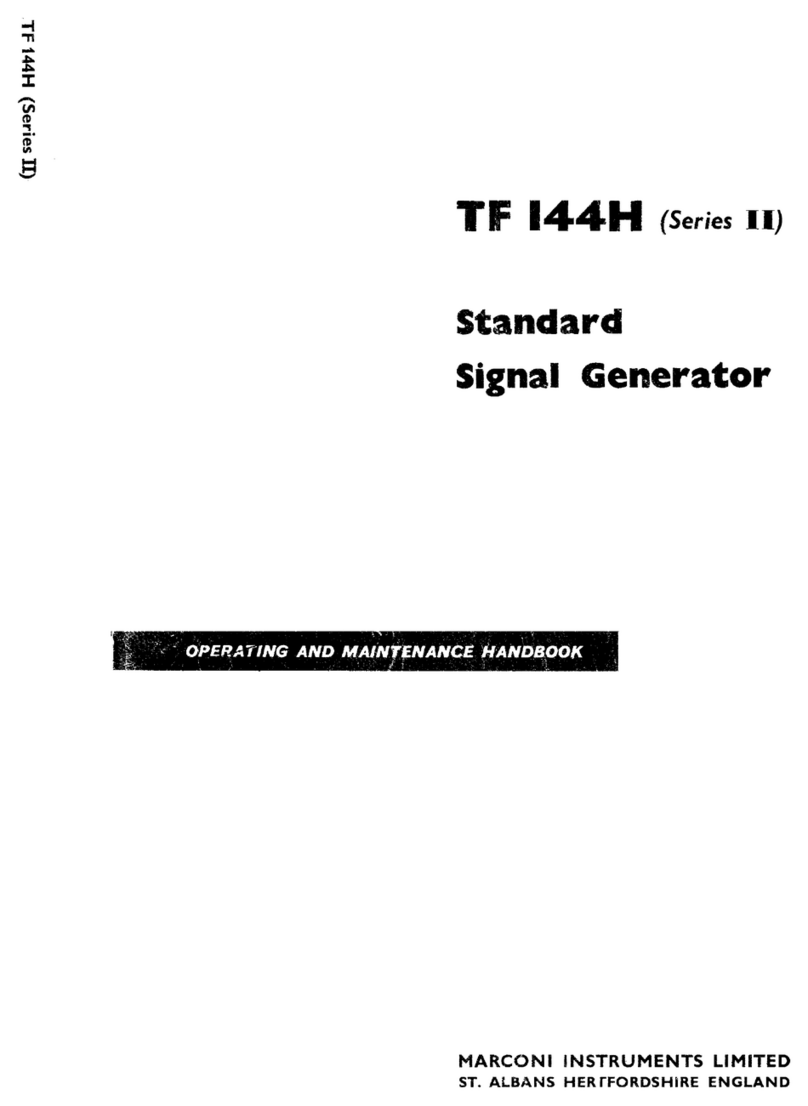
OPERATING PRECAUTIONS
This product has been designed and tested in accordance with IEC Publication 348 - 'Safety
Requirements for Electronic Measuring Apparatus'. To keep it in a safe condition and avoid risk of
injury, the precautions detailed in the WARNINGS below should be observed. To avoid damage to the
equipment the precautions detailed in the CAUTIONS should also be observed.
WARNING - ELECTRICAL HAZARDS
&
AC supply voltage. This equipment conforms with IEC Safety Class
1,
meaning that it is provided
with aprotective earthing lead. To maintain this protection the mains supply lead must always be con-
nected to the source of supply via a socket with an earthing contact. Make sure that the earth protection
is not interrupted if the supply is connected through an extension lead or an autotransformer.
Before fitting a non-soldered plug to the mains lead cut off the tinned end of the wires, otherwise
cold flowing of the solder could cause intermittent contact.
Do not use the equipment if it is likely that its protection has been impaired as a result of damage.
Fuses. Note that there is a supply fuse in both the live and neutral wires of the supply lead.
If
only
one of these fuses should rupture, certain parts of the equipment could remain at supply potential.
Make sure that only fuses of the correct rating and type are used for replacement. Do not use
mended fuses or short-circuited fuse holders.
To provide protection against breakdown of the supply lead, its connectors (and filter if fitted), an
external supply fuse with a continuous rating not exceeding
6 A
should be used in the live conductor (e.g.
fitted in the supply plug).
Removal of covers. Disconnect the supply before removing the covers so as to avoid the risk of
exposing high voltage parts.
If
any internal adjustment or servicing has to be carried out with the supply
on. it must only be performed by a skilled person who is aware of the hazard involved.
Remember that capacitors inside the equipment. including any supply filter capacitors, may still be
charged after disconnection of the supply. Those connected to high voltage points should be discharged
before carrying out work inside the equipment.
WARNING - OTHER HAZARDS
Parts of this equipment are made from metal pressings, therefore it should be handled with due
care to avoid the risk of cuts or scratches.
Some of the components used in this equipment may include resins and other materials which give
off toxic fumes if incinerated. Take appropriate precautions, therefore, in the disposal of these items.
This equipment has a lithium battery which if incorrectly handled could cause
a
danger to health or
safety - refer to the Service Manual for safe handling precautions.
CAUTION - LCD HANDLING
When using this equipment take care not to depress the front or rear faces of the display module as
this may damage the liquid crystal display elements.
CAUTION - STATIC SENSITIVE COMPONENTS
&
This equipment contains static sensitive components which may be damaged by handling - refer to
the Service Manual for handling precautions.
iv
46881-852A
Aug. 89
-
~
{
L
l
L
L
•
I
l-
f,
)
••
L
~-'
IL
I
j
r




























